Dreadbox Nymphes Polyphonic Analogue Synthesizer review
The Dreadbox Nymphes is a pint-sized polysynth with a big analogue heart and a stunning price tag. We put it through its paces to see what this 6-voice synth has to offer.
Dreadbox Nymphes
If there’s one thing that often defines the sound of a modern polysynth it’s the effects. You turn on a synth for the first time, doesn’t matter if it’s hardware or software, pick up a preset and wham – a huge sound, moving, chorusing, dripping in reverb and sparking with delays that disappear off to the heavens. It makes everything sound good, so good that perhaps we don’t really need to put too much thought into our synthesizing. The first thing that struck me about the dreadbox Nymphes is the lack of effects. It has a reverb which we’ll come onto in a minute, but the sound is largely raw and standing on its own. It is unashamedly naked which forces you to fundamentally treat it differently.
I wonder if there’s some correlation between the clarity of the elements and how this synth is “dedicated to all the abused and oppressed women in the world and how through navigating Nymphes we may become a better synth player and a better human”. Now I don’t know whether playing a synth will smash the patriarchy anymore than other synths will kill fascists but I applaud the sentiment and concept of intersecting our love of handcrafted synths with the reality of life that many people experience.
But anyway, dreadbox Nymphes comes to the table with a different set of priorities to most polysynths and I think Dreadbox has been very clever here in terms of how it functions and for a price of only £419. Let’s check out the details.
Dreadbox Nymphes is a polysynth!
Nymphes is a 6-voice polyphonic analog synthesizer with simple waveforms, sub-oscillator, noise generator, a 24dB/octave lowpass filter, 6dB/octave high-pass filter, 2 envelopes, 1 per voice LFO and 1 global LFO with multiple waveforms. There’s a digital reverb, a chord mode, expression mapping and a preset system for 49 factory and 49 user presets. All of it is packed into a good looking, metal desktop box that’s smaller than a Typhon and bigger than a Volca.
The sound is classically smooth and brassy. You are only playing with sawtooth, square and triangle waveforms in a single oscillator and so the synthiness is distinct, chewable and without chorus or delay to mess it about, it’s right in your face. It has the vibe of a monosynth with the minimal controls that implies. It’s instant and analogue and not remotely complicated and yet has some very pleasing little tricks up its sleeve. You can pull it easily from stabs into organesque tones, then drip in some bubbling resonance, push in some deeper attacks, and get weird with the LFOs. It invites and rewards in the simplest of terms.
Front Panel
The front panel has a scattering of sliders that tell half the story whereas the other half is told via a Shift button. The sliders control all the parameters written below them. At the same time, they control the parameters written above them in pink when the Shift button is held or latched. This has the potential of creating a bit of confusion and accidental parameter changes where you forget to press shift but it’s certainly not uncommon in synths to have layers of control. The labelling is clear, the functionality is obvious and all you have to do is get used to it as an interface.
Honestly, in playing with it for a few days now, I have had very few issues with the interface. I do get the shifting muddled sometimes but for me, that’s part of how you explore a synthesizer and I see the potential for happy accidents as a positive thing. The envelopes are perhaps where you feel it the most. By default, it controls the ADSR of the filter and you need Shift to control the ADSR of the VCA – I’m not sure which I would be fiddling with the most. An envelope can also be helpfully visual with those sliders but of course, once you’ve used Shift or selected a preset they won’t represent the actual values.
I’ve seen a lot of commentary on the Nymphes front panel. The thing is that any synth that combines presets or digital control with analogue knobs or sliders won’t reflect the patch in the front panel. It feels slightly odd that it would need any special justification in the Nymphes.
Poly Modes of the Dreadbox Nymphes
Over on the right is a menu that uses the Preset Control knob and Menu button to navigate its parameters. It’s pretty straight forward and the synth even comes with a card that maps out the entire structure of the menu and how it works. In the menu you can select from one of 6 playing modes. You start with 6-voice poly, then we have 6-oscillator unison, then 4-oscillator unison, then it becomes a 2 oscillator 3-note synth and then a 3 oscillator 2-note synth, and finally a regular single oscillator monosynth.
The 6-oscillator unison is immense! It turns it into a face-eating monosynth and enables a couple of other cool features. The first is Detune where the oscillators are pushed apart from gooiness to cacophony. The second is Chord Mode which requires a section to itself.
Chord Mode
When running in a non-polyphonic mode you can engage Chord Mode to use up to 7 pre-defined chords accessible on the Chord slider. These then play as one-finger chords up and down the keyboard.
Chords can be defined in the Chord Mode from the Menu. Use the Preset Control knob to select the chord number and hold the chord or intervals you want to be available there. It gets interesting when you route modulation to the Chord slider. LFO 2 is a global modulator that can modulate any of the movable slider parameters. Select it in the Menu and push up the Chord slider and the LFO is running a whole bunch of chords for you.
Dreadbox Nymphes: Modulators
From the front panel the two envelopes can be used to control the filter cutoff, VCA and pitch of the oscillator. LFO 1 has direct access to the pitch and filter cutoff.
The LFO has 5 different waveshapes including random and has a few different speed modes which can take it up into audio rate for some FM synthesis. But what I find interesting is the Delay and Fade parameters. Push up the delay and the LFO only starts to come in once the note has been held for a while. The Fade control then fades the LFO out before the key is released. It has the effect of adding vibrato onto the end of the note or bringing in some interest mid-note and then returning to normal. It’s a simple and very creative little feature. LFO 2 can use the exact same controls.
The Menu lets you map incoming MIDI velocity, aftertouch, MIDI CC and the Mod wheel to destinations in Nymphes just like assigning sliders to the LFO 2. Velocity is not really there by default; it’s part of that monosynth style vibe the Nymphes has, but you can map velocity to the oscillator Level slider and bring expression that way. But any of the sliders are up for grabs making for some very expressive playing that’s more about timbre than softness.
Reverb
Dreadbox has added its own digital reverb to the end of the chain. It’s quite interesting and very characterful. They describe it as “Lush” which is not really the word I’d use. It’s more of a springy, lo-fi, analogue sounding reverb that twists and groans as you move the parameters. To make changes you select Reverb in the Menu and then use the ADSR sliders to alter the Size, Decay, Filter and Mix. The Mix never fully drowns the sound but if you push up the Decay you can start to wind up a good amount of weird feedback.
The Reverb is interesting but perhaps not to everyone’s taste when we are so spoiled by deep digital reverbs these days. Maybe there’s a bit too much character. Also, the output of Nymphes is simply a single mono output so the reverb is also in mono which is perhaps not ideal.
External Effects
This brings me nicely to the adding of external effects. It feels completely natural and almost necessary to add effects to the Nymphes. Adding a chorus with a stereo output, a delay and a richer reverb transforms the Nymphes into a power synth that just sounds completely gorgeous. Which makes you wonder why Dreadbox didn’t include the effects engine from something like the Typhon or Hypnosis?
I think this is where Dreadbox has been quite clever and thoughtful. Sure you can see it as the absence of something but what’s the first thing you turn off when mixing synths? The effects! Because you want consistency in your mix and you’re probably going to be using effects on buses which different things will share. So commonly we find that effects are actually superfluous on synths in the context of mixing and integrating into a hardware situation and we already have hardware or software effects ready to go. You can also see the same idea played out in the mono output. Surely all synths should be stereo? But not if you want to simply add it to one channel on your mixer like any monosynth. Nymphes can drop seamlessly into a DAWless setup in terms of physical space, connections and effects while enabling them to keep the price down – genius.
MIDI Control
All the parameters inside the dreadbox Nymphes can be controlled via MIDI. It’s powered by USB and creates a MIDI port if connected to a computer. It’s very easy to route automation to it or, if you are offended by the Shift action, map in another MIDI controller to take care of the second level of parameters. In some ways, you could use the Nymphes as a hardware plugin from your DAW. Tim Shoebridge is working on a MIDI editor for Nymphes that you can load and save within your DAW which essentially turns it into a plugin. That’s very useful although I don’t think it misses some of the joy of playing with Nymphes directly.
Conclusions
There’s plenty of happiness to found inside dreadbox Nymphes. It’s a playful synthesizer that feels like it’s using every analogue component to its fullest and fattest. The simple pleasures of fiddling with three waveforms, a filter and a bit of modulation shouldn’t be underestimated and while it may lack some sophistication and complex tones it makes up for it in rawness, life and warmth.
The interface takes a little bit of time to feel familiar with and the Shift switching will not satisfy everyone, but I’ve found it worth my time. I’m not sure the reverb really works for me, particularly on a mono output, and if I was given the choice I would have opted for the delay from the Dysphoria or Erebus as the perfect effect for this synth. But maybe that needs more of my time too.
The price of £419 is stunning for a 6-voice analogue polysynth especially when you consider that Dreadbox is a boutique maker of synths and not a massive manufacturer with factories in China. The nearest comparisons would be perhaps the Korg Minilogue XD desktop, but that’s only 4-voice or the Behringer Deepmind 6 which has some of the similar reflections of the Roland Juno-106 that the Nymphes has. But they are very different instruments.
The compromises Dreadbox have looked for in keeping it affordable with the mono output, choice of effect and doubled up interface actually let it sit more naturally in amongst other synths and an existing hardware setup. It’s not trying to be a massive power synth but it will fit right in and sound brilliant. Once you’ve added your own choice of effects this thing simply flies.

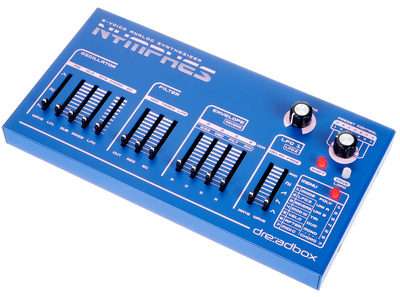
Dreadbox Nymphes Video
You are currently viewing a placeholder content from YouTube. To access the actual content, click the button below. Please note that doing so will share data with third-party providers.
You are currently viewing a placeholder content from YouTube. To access the actual content, click the button below. Please note that doing so will share data with third-party providers.
One response to “Dreadbox Nymphes Polyphonic Analogue Synthesizer review”

 4,8 / 5,0 |
4,8 / 5,0 | 
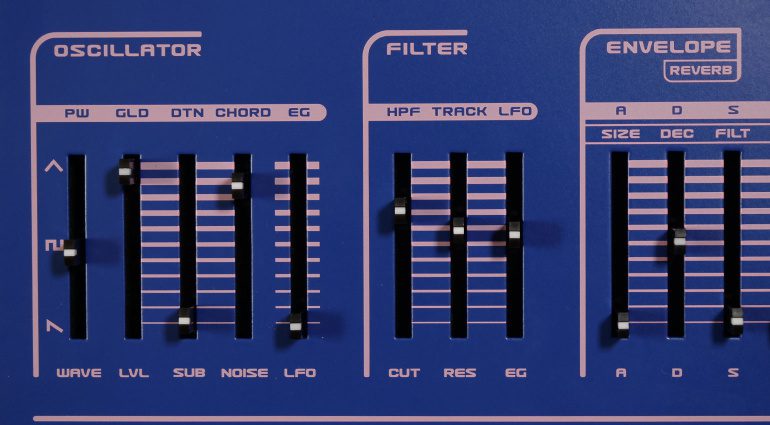
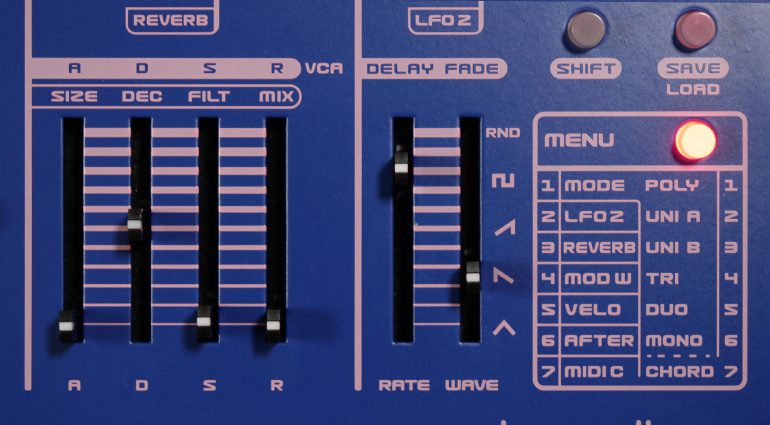



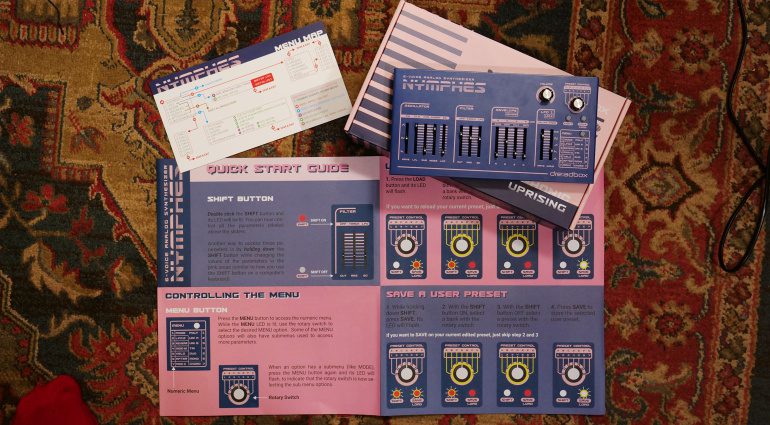








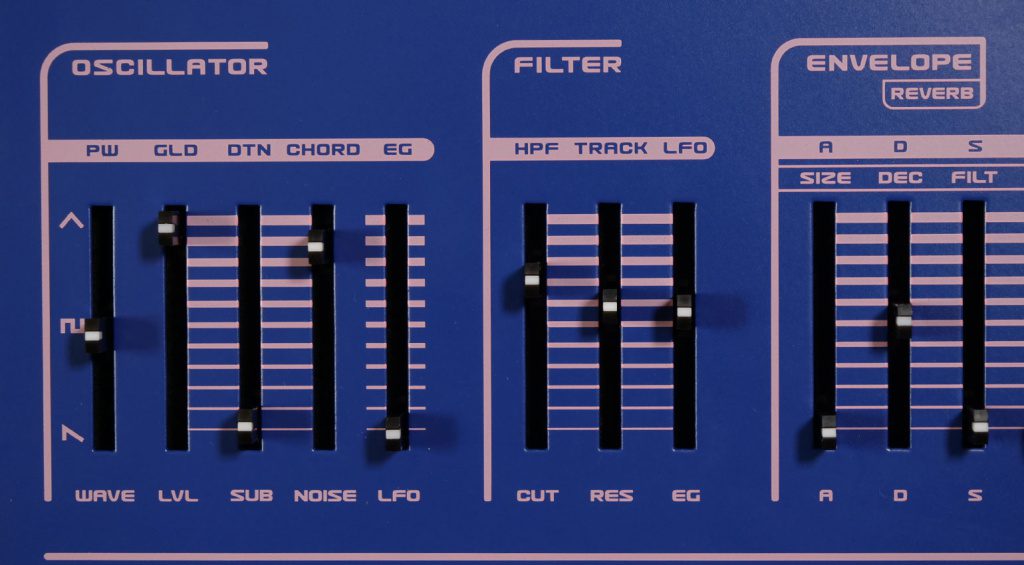
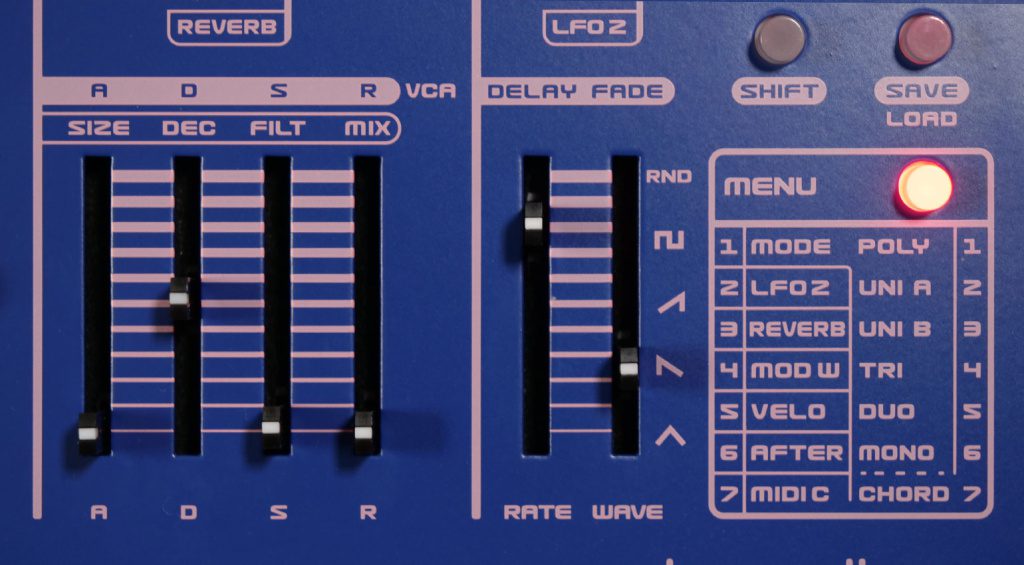
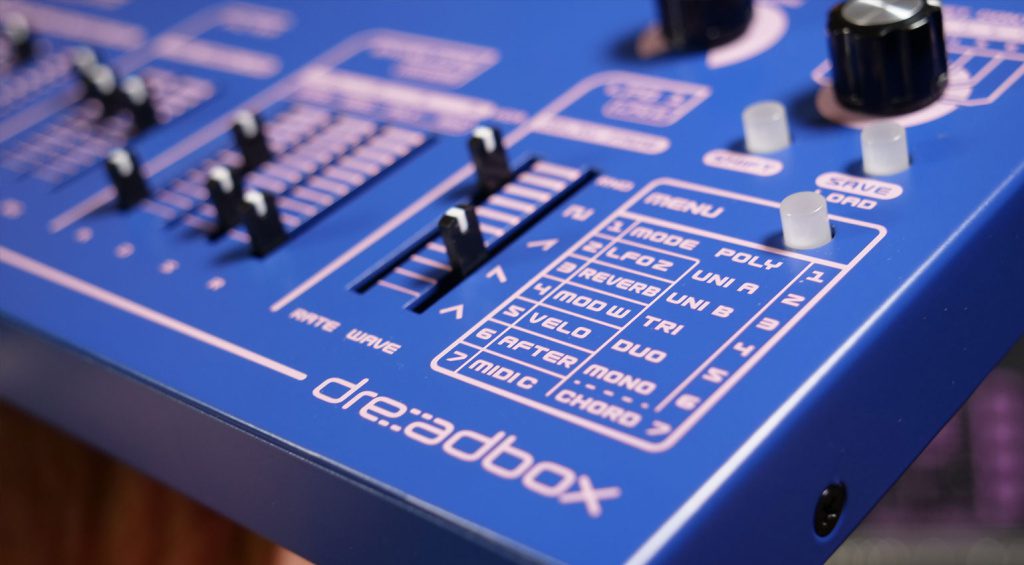
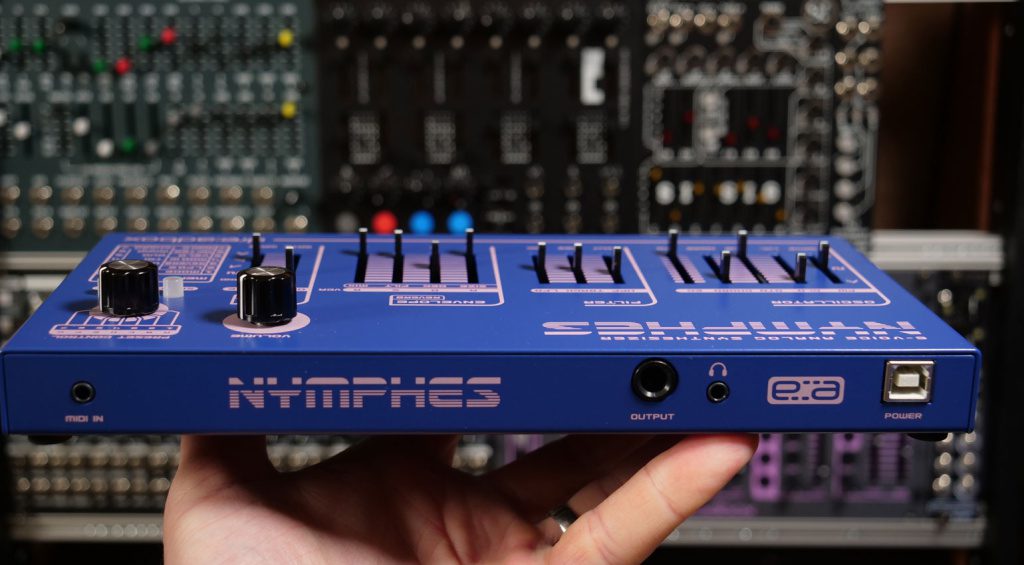

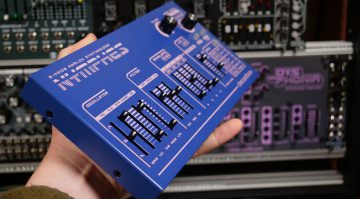

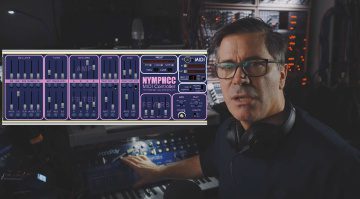
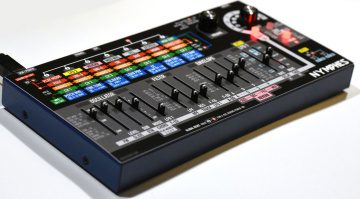

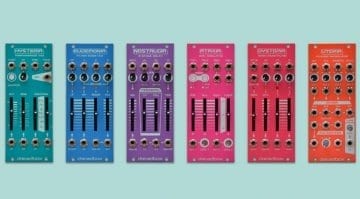

I’m using mine as a second voice ( via MIDI ) to my Medusa in a live drone setup, and let me tell you, it really complements the Medusa. It’s so much fun tweaking both whilst a set of notes are held, I need to keep a recorder running to capture everything. I can lose hours like this.